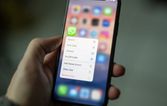
Apple is poised to unveil its iPhone 16 lineup, with the launch expected on September 10. The leaked invites, with the tagline “Ready. Set. Capture,” have already sparked excitement among tech enthusiasts eager to get their hands on the latest devices. However, a recent study sheds light on a critical issue that might dampen this excitement: many potential buyers are concerned about affordability.
A survey involving 766 participants explored the primary reasons why they might not upgrade to the iPhone 16 later this year. The overwhelming majority, 34.2%, cited financial constraints as the main reason for holding off on purchasing the new model. This finding highlights a significant challenge for Apple as it prepares to launch its next generation of iPhones.
Customers Favor Older Models Over New Ones
The second most common reason for not upgrading to the iPhone 16, as reported by 34.1% of the respondents, is a preference for sticking with their current devices. This trend suggests that many consumers find their older iPhone models, such as the iPhone 12 or iPhone 13, sufficiently capable of meeting their needs. As long as these devices continue to perform essential functions reliably, there’s little incentive for these users to spend on an upgrade.
For the third most cited reason, 12.8% of survey participants stated that they were still under contract, preventing them from upgrading immediately. Additionally, 5.5% of respondents expressed skepticism, noting that the features and specifications of new iPhones tend to be only marginally different from those of previous models.
The 2-Year Upgrade Cycle: Is It Worth It?
Many consumers follow a 2-year upgrade cycle, believing it provides better value for their money by allowing them to benefit from more significant hardware and feature improvements. However, a small minority—3.3%—believe that the iPhone 16 doesn’t offer enough to justify an upgrade this year. These individuals are choosing to wait for the iPhone 17, anticipating that it may offer more compelling advancements.
Despite these reservations, Apple is reportedly planning to ship 90 million units of its upcoming models, signaling the company’s confidence in high demand. Nonetheless, as the survey reveals, the reasons for upgrading—or not—are varied, and financial considerations play a crucial role in these decisions.
A Balancing Act for Apple
Apple’s challenge lies in balancing innovation with affordability, ensuring that its new models appeal to a broad spectrum of consumers. The company must also contend with a market where many users are content with older models that still perform well. As the iPhone 16 launch approaches, it will be interesting to see how these dynamics play out and whether Apple can sway hesitant customers to invest in the latest offerings.
The survey results suggest that Apple might need to address the price sensitivity of its customer base more directly, perhaps by offering more flexible financing options or trade-in deals that make the new models more accessible.








By Andrej Kovacevic
Updated on 20th August 2024